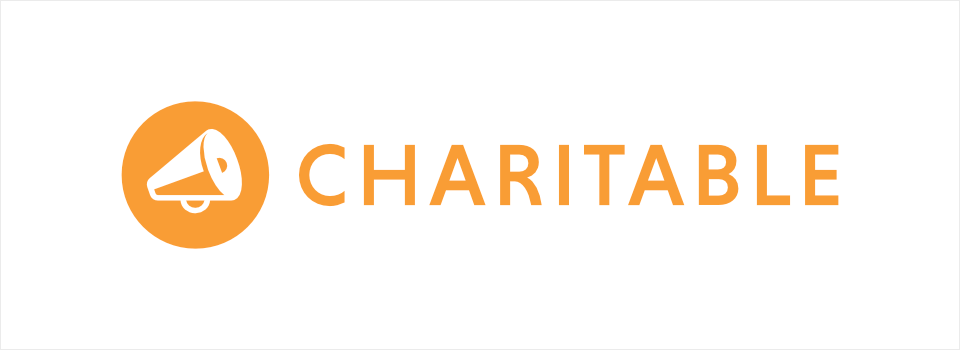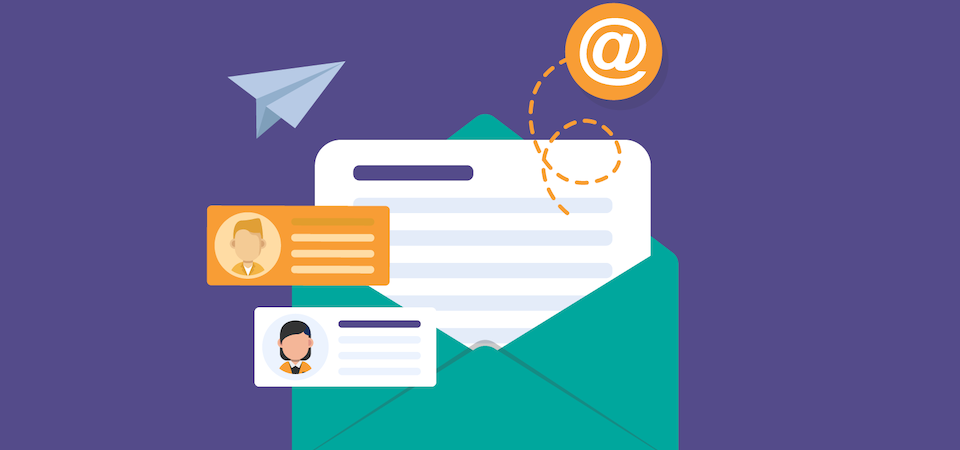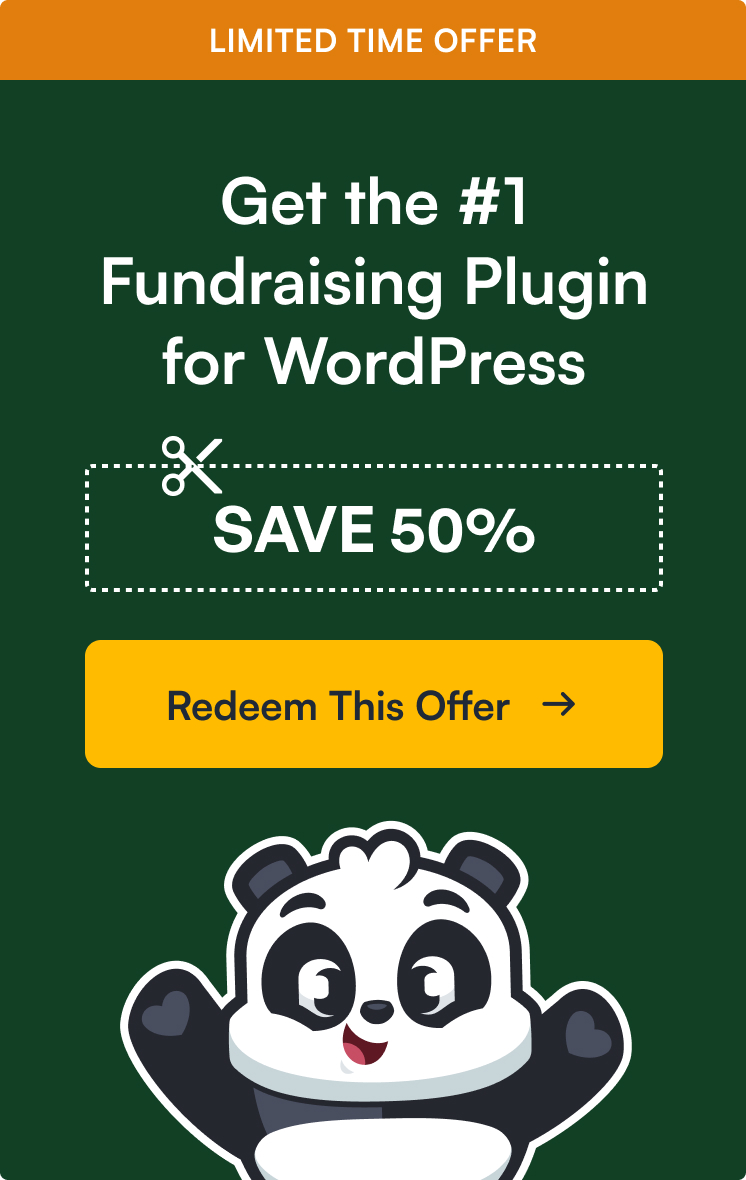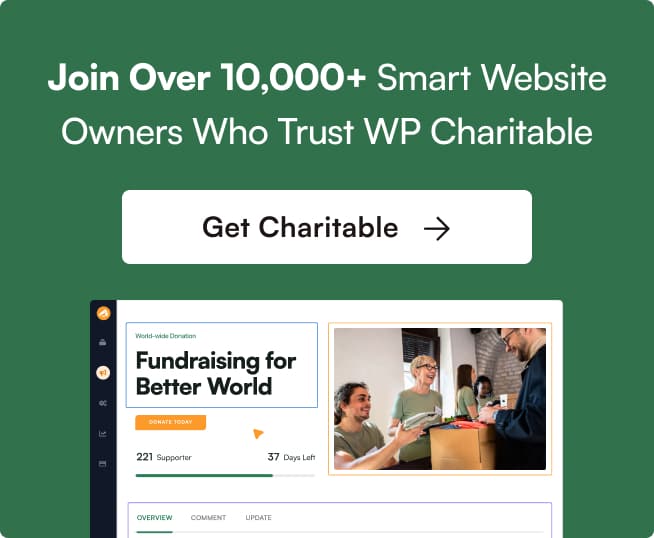As a nonprofit in today’s modern world, adding email donations to your organisation’s online fundraising strategy has never been easier.
According to the business data provider Statista, there are 4 billion people who open and read their emails every day. By 2025, this number is expected to increase to at least 4.6 billion. Furthermore, there are 306 billion emails sent and received on a daily basis, with 64% of small businesses currently using email marketing to reach their customers and loyal donors online.
Checking email has become a fundamental part of people’s lives, and any nonprofit that doesn’t integrate themselves into the “email ecosystem” may find themselves receiving far fewer donations than they could otherwise.
By creating an email list with your most loyal donors and supporters, your nonprofit can establish a trusted and reliable communication channel with those who care about your organisation’s goals and visions the most.
Email fundraising can be automated and customised based on the demographics of your subscribers. You can choose what message to send based on whether someone has donated in the past or if they’re a recurring monthly donor who contributes to your nonprofit frequently.
Email marketing used to be very difficult to pull off in the past, requiring advanced technical skills, coding proficiency, and industry know-how. Today, getting donations through email has been made remarkably simple.
This detailed guide will show you how to create the perfect email donation campaign and receive an increased number of donations for your nonprofit.
Let’s get started.
How to write emails for effective fundraising
Suppose you’d like to write eye-catching, persuasive emails that communicate your organisation’s values and encourage people to donate. In that case, there are a few proven steps you can take to ensure your email donation campaign performs.
Before a single word is written on the page, you must first plan out your email campaign in its entirety. This includes understanding your audience, setting up your email software, and then configuring your donation forms and payment gateways. Once you’ve configured the back-end and mapped out each email within your campaign, you’ll be ready to start the writing process.
Writing your donation emails includes picking an attractive email template, writing a subject line that gets people to read your email, and then giving your readers a compelling reason to donate to your organisation.
Finally, after your emails are written and ready to go, you’ll need to preview your donation emails and then hit the send button! Your email software provider will give you relevant statistics such as open rates, link clicks, and the number of people most engaged with your emails.
In the next few sections, we’re going to walk through each of these steps in step-by-step detail, allowing you to create an email donation campaign that brings in supporters who donate to your nonprofit.
Preparing your email donations campaign
The importance of proper preparation cannot be overlooked.
If your organisation takes the time upfront to plan out your email campaign and understand your goals before a single word is written, you’ll have a much greater chance of campaign success.
Understand the demographics of your audience
The first step towards developing a wildly successful email donation campaign is to understand exactly who your target audience is.
People respond, react, and take action when they feel that they are understood and being directly spoken to, making it increasingly important that you know the demographic profile of your top donors.
If you already have a demographic profile or “persona” that fits your ideal contributors, this is the time to pull it out and bring it to the forefront of your campaign.
If you’re not yet sure who you’re targeting, your organisation can survey some of your top donors or people who have been most engaged with your nonprofit’s goals and mission.
For example, you can investigate your target donors and their personas by asking questions like:
- Are they 35-54-year-old females who love animals and focus their free time on preventing animal cruelty?
- Is your target demographic 65+ retired males who have worked in the logging industry and have a passion for stopping deforestation?
Identify and understand the demographics of your audience. This will allow you to write your emails in a tone of voice that speaks directly to them.
Set up your email software
When preparing to send “bulk emails”, your nonprofit should choose a reliable email software platform from which you’ll send all of your emails.
By choosing a reliable email platform, you’ll ensure compliance with anti-spam laws, have excellent deliverability that lets your emails make it into people’s inboxes, and experience an easy to use interface where you can create and design your email campaigns.
Some of the most reliable email platforms today include:
- MailChimp – A long-standing email platform with a simple interface and detailed analytics.
- Campaign Monitor – Easy to use email software containing beautiful email templates.
- MailerLite – Affordable email provider that offers automation and is simple to use.
- ActiveCampaign – Highly customizable email platform with great deliverability.
- MailPoet – Great email provider that offers customizable forms, advanced analytics, and an easy-to-use user interface.
- Mailster – Effective email auto-responder that’s affordable, has an informative dashboard and offers no subscriber limits.
Each of these email software platforms integrates with reliable donation plugins such as Charitable.
Depending on your organisation’s budget, pick the email platform that would best suit your nonprofit and create an account.
Follow the instructions provided by your email provider to complete the initial setup of your email provider, and you’ll be ready to configure your payment gateways next.
Configure your donation forms and payment gateways
To receive email donations for your nonprofit, you’ll need to set up a payment form as well as configure the payment gateways through which people can submit payments.
If you do all of these steps manually, it can get complicated rather quickly. First, you need to determine which payment methods you’ll accept and ensure you have accounts with those payment providers (i.e. PayPal, Authorize.Net).
After you’ve configured your payment gateways, you’ll then need to determine how to manually embed your payment forms within your website or another public page on the web.
Fortunately, there’s a better way with Charitable
Charitable is a plugin for WordPress websites that allows you to quickly and easily add donation forms and integrate all of your desired payment gateways.

The WP Charitable plugin offers a Newsletter Connect extension that allows you to automatically add all of your donors to an email list, allowing you to send them further messages and ask for donations in the future.
For connecting payment gateways, you can choose between Stripe for accepting credit card payments, Mollie for European payments, Braintree for PayPal, Apple Pay, Google Pay, and Venmo, and Authorize.Net for credit card payments and ACH or eChecks.
Once you’ve chosen the payment methods you wish to accept, set up your payment gateways, and successfully added your email software provider to the Charitable plugin; you’re ready to add donation forms to your website.
Forms for your email donations can be created by either creating a donation campaign or making a simple donation form.
Most nonprofits choose either the Charitable Growth or Essentials plans, allowing them to start accepting email donations on their website right away and direct donors to their donation forms through an engaging email campaign.
Plan and map out your email donation campaign
Sending just one email isn’t enough these days – your future donors want to hear from your organisation, what you’ve been up to, and how your efforts are progressing.
Furthermore, your audience may have a cluttered email inbox and miss one of your earlier emails as it gets buried under a plethora of messages.
One problem with many nonprofits in recent years is that they don’t communicate enough with their loyal supporters, an unfortunate yet easy mistake to make.
If you want to create an email campaign that really “packs a punch” and engages your readers, you’ll need to develop a plan for writing a string of emails that provides information, entertains your audience, and then asks for a donation at the end.
Don’t forget that most email software providers allow you to automate your email campaign and space out each email so that they send automatically. Automated campaigns are the best way to ensure that your readers are receiving consistent emails and keep your nonprofit at the top of their minds.
Draw out and develop a plan for your email donation campaign, considering items such as:
- How many emails would you like to send? What is the subject and theme of each email?
- How frequently do you want to send emails, and what is the spacing between emails? One day? Three days?
- Would you like your emails to coincide with certain holidays and major seasonal events? This can also be automated in your email software.
- In what way will your email entertain and inform the reader? How will you transition your emails into a “call to action” asking for email donations?
If you like using flowchart software, you can do so to plan out your campaign. If you’re more “old school”, you can simply take out a pen and paper to draw out your emails and their order by hand.
Don’t overcomplicate this step, but also make sure that you’re thoroughly planning the order and subject matter of each email.
Writing your donation emails
At this point, you’ve successfully planned out your email donation campaign and know exactly what audience demographics you’ll target, what email software and donation button software you’ll use, and the order and subject matter of each email in your campaign.
The next step, and possibly the most exciting, is to start writing your emails one by one.
Pick an attractive email template
Nearly all email software platforms have a number of email templates that are pre-designed and ready to populate with content.
Depending on the email provider you’ve chosen, this step will vary from one email software platform to the next. Usually, when you create an email campaign or create a new email, you’ll be asked if you want to use an existing email template.
When choosing your template, make sure you find a template that is:
- Clean
- Minimalistic
- Modern
Avoid choosing templates that take attention away from the content of your email, templates that are too “flashy”, and templates that are too cluttered for a good user experience.
As long as you choose a clean and professional email template that doesn’t detract your current or potential donors from the actual content, you should be good to go.
Start with a good subject line
Whenever a new email pops up in your inbox, what is the first thing you look at to determine whether or not it’s important enough to open?
That’s right, the subject line!
Your email’s subject is one of the first things your readers will see, and it’s critically important to get it right if you want your future donors to actually open your emails. If your emails don’t get opened and read, how will your donors make it to the donation button?
According to HubSpot, a good email subject line should promote:
- A sense of urgency
- Curiosity
- Be personal
- Offer a clear benefit
- Be relevant and timely
Most email software providers allow you to A/B Test your email campaigns to further improve email open rates.
What is “A/B Testing”? In simple terms, it is when you test two variants against one another and determine which has the best response.
For example, you could have Subject Line A and Subject Line B. If you create an A/B Testing campaign, your email provider will send A to a portion of your email list and B to another portion. You can then track engagements, link clicks, and ultimately donations to determine which subject achieved the best results.
Give your readers a compelling reason to donate
When writing your email, you’ll always want to end each email with a compelling reason to donate.
This can be achieved by discussing what your nonprofit has been working on, what you urgently need support for, and describing in detail how your readers can help.
To personalise your emails even further, you can address your readers by name through the use of email placeholders.
This can be found within your email software provider and typically includes inserting a placeholder such as {{NAME}} (will vary based on your email software) that is then replaced by the actual name of your reader for personalisation.
To give your readers a compelling reason to donate now, consider including details such as:
- A short story about your nonprofit
- Spotlight a potential beneficiary of donations and the cause they’re helping
- State the end date of your donation campaign to promote urgency
Use images to catch readers’ attention
A picture paints a thousand words. There’s no way to better evoke an emotional response in readers than to include images that describe where their donation will go.
For example, you can show photos of destroyed properties from a natural disaster or show photos of the beneficiaries in your email campaign.
If your readers visually see where their money is going, they’ll be more likely to donate.
Add call-to-action (CTA) buttons to donate
Now we arrive at the most important part of your donation emails – prominent CTA buttons.
Make your buttons stand out front and centre in your email, use bold and eye-catching colours, and make them clear.
A good CTA may be, for example, a red centred button after the body content of your email that says “Donate Now”. When your reader sees the button, they know exactly what they need to do.
Your CTA buttons should link to your website’s donation page to allow readers to donate quickly and easily.
Sending your donation email campaign
You’ve planned out your email campaign, successfully written your emails, and should now be ready to send them off to your visitors and future donors.
Preview your donation emails
Before sending your emails to the masses, you’ll want to test your emails to ensure they look as you intended and to verify that all of the links and buttons work correctly.
In your email software, there should be a “preview” button for each email that allows you to see it in its final form.
Additionally, most email providers have a “Send Test Email” option that allows you to see how the emails will look in your own email inbox.
Look over your emails, and check the following:
- Do you have any typos or grammatical errors in your body copy?
- Do all of your images look good?
- Are all links working correctly?
- Do links to your donation form work correctly?
- Have you added links to your social media platforms?
If all is well, you can begin scheduling and sending your email donations campaign.
Schedule your donation emails
Now that your emails are written and verified, you can begin scheduling your campaign to be sent on specific days or starting at a certain date or time.
According to CoSchedule’s review of 14 email timing studies, they discovered that Tuesday, Thursday, and Wednesday were the best days to send out an email campaign, with the best times being 10 am, 8 pm, 2 pm, and 6 am in that order.
Depending on your audience, your times and days may vary. Experiment with different sending days and see what works best for your readers.
Additionally, it’s worth checking if your email software can send emails in your recipient’s time zone. This will allow you to send emails at precisely 10 am, for example, no matter where in the world each reader is located.
Review the performance of your donation email campaigns
Once your emails have been created, scheduled, and sent, your eyes should begin to turn to your email software’s data analytics.
Monitor fundraising email campaign data such as:
- Open rate – What percentage of recipients actually opened your email?
- Click-through rate – What percentage of readers clicked a link in your email?
- Unsubscribe rate – What portion of readers unsubscribed from your emails entirely?
- Online donations received – Out of all of your email recipients, how many followed through and donated to your nonprofit organisation? What amount of donations did you receive?
By keeping an eye on your email campaign’s performance, you’ll begin to see what is working and what isn’t.
Formulate hypotheses on what is and isn’t effective in your email campaign, and then test your improvement hypothesis in subsequent donation emails.
To succeed in acquiring the most email donations you can for your organisation, you’ll need to iterate through slight improvements in each email you send. Each tiny improvement will eventually compound, and if all goes well, you should see an increase in email donations.
Build a strong email donation campaign for your nonprofit
In this guide, we walked through creating an email donation campaign from start to finish. Our ultimate goal was to develop an email campaign that allowed your nonprofit to receive as many donations as possible, helping your organisation thrive, grow, and expand.
You should be familiar with preparing your email campaign, writing your donation emails, and sending your completed emails to your audience.
Well-crafted and strategically sent donation emails can be surprisingly effective, letting you receive donations from individuals you wouldn’t otherwise have been able to reach offline.
Solidify your email donations infrastructure
Receiving donations from readers who click on your email’s donation link is the most important part of the process.
You can solidify your donation infrastructure and ensure all donations are securely and safely received by using a WordPress donation plugin like Charitable.
Nonprofits can benefit from Charitable’s Growth and Essentials plans that provide:
- Recurring donation capabilities
- Newsletter Connect and Payment Gateway features
- Fee relief
- Gift aid
Accept donations today with Charitable
Start accepting email donations for your nonprofit today by using Charitable on your WordPress website.
Sign up for one of Charitable’s Growth or Essentials plans today to start receiving more online donations and harnessing the power of email. A 30-day money-back guarantee is included in all purchases.



Leave a Reply